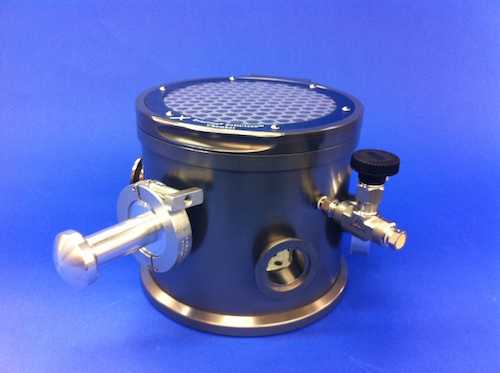Members Login

Channels
Special Offers & Promotions
XEI Scientific and University of Southern California announce a publication in Advanced Materials on the use of downstream plasma cleaning
XEI Scientific Inc. reports a new publication from their user group at the Ming Hseih Department of Electrical Engineering at the University of Southern California, Los Angeles.
The paper released in the Journal of Advanced Materials reports on the direct bandgap transition in many-layer MoS2 by plasma-induced layer decoupling and their use of XEI's Soft Clean plasma cleaning system for sample preparation.
The research team of Associate Professor Stephen Cronin is located in the Ming Hseih Department of Electrical Engineering at USC Los Angeles. They focus mainly on optical spectroscopy and electron transport at the nanometer scale. Professor Cronin's research spans a broad range of topics including electrical and spectroscopic characterization of carbon nanotubes, graphene, and other novel lower dimensional materials.
2D materials such as graphene and few-layer transition metal dichalcogenides (TMDCs) have been attracting a lot of research interest in recent years since mechanical exfoliation from the 3D bulk was demonstrated. While graphene has many advantages, it is not suited to the field of optoelectronics where TMDCs such as molybdenum disulphide (MoS2) have a clear advantage thanks to exhibiting a finite band gap in the visible wavelength range. The paper describes how gentle oxygen plasma treatment produces direct bandgap transition in many-layer MoS2.*
The authors (Rohan Dhall et al) chose to use the XEI Evactron® Soft Clean plasma cleaner for the process. Here, the plasma is generated by flowing room air past an electrode supplied with 20 W of RF power at 200 mTorr. Samples are placed 6–10 cm away from the plasma source. Ionized oxygen atoms diffuse towards the sample chamber with low kinetic energies. Samples were exposed to the O2 plasma for about three minutes. While typical plasma cleaners used in semiconductor fabrication operate using a "sputtering" mechanism where the sample is bombarded with ions carrying significant kinetic energy, remote plasma cleaners rely mainly on the chemical reactivity of the ionized oxygen to remove surface contaminants. Analytical techniques including photoluminescence spectroscopy (PL), Raman spectroscopy, atomic force microscopy (AFM), and electron energy loss spectroscopy (EELS) are used to follow the effects of the plasma treatments on a range of samples having different numbers of layers. The authors successfully demonstrate the generation of an indirect-to-direct bandgap transition in many-layer MoS2 through the use of an easy to use, scalable oxygen induced plasma process. The direct gap semiconductor show a significantly enhanced PL emission due to the efficient absorption of light in direct gap materials, crucial for application in optoelectronic devices.
XEI has now sold more than 2000 Evactron systems worldwide solving contamination problems in many different environments using high vacuum including electron microscopes, FIBs and other vacuum sample chambers. Each system comes with a 5 year limited warranty.
Reference * Adv. Mater. 2015. DOI: 10.1002/adma.201405259
Media Partners



